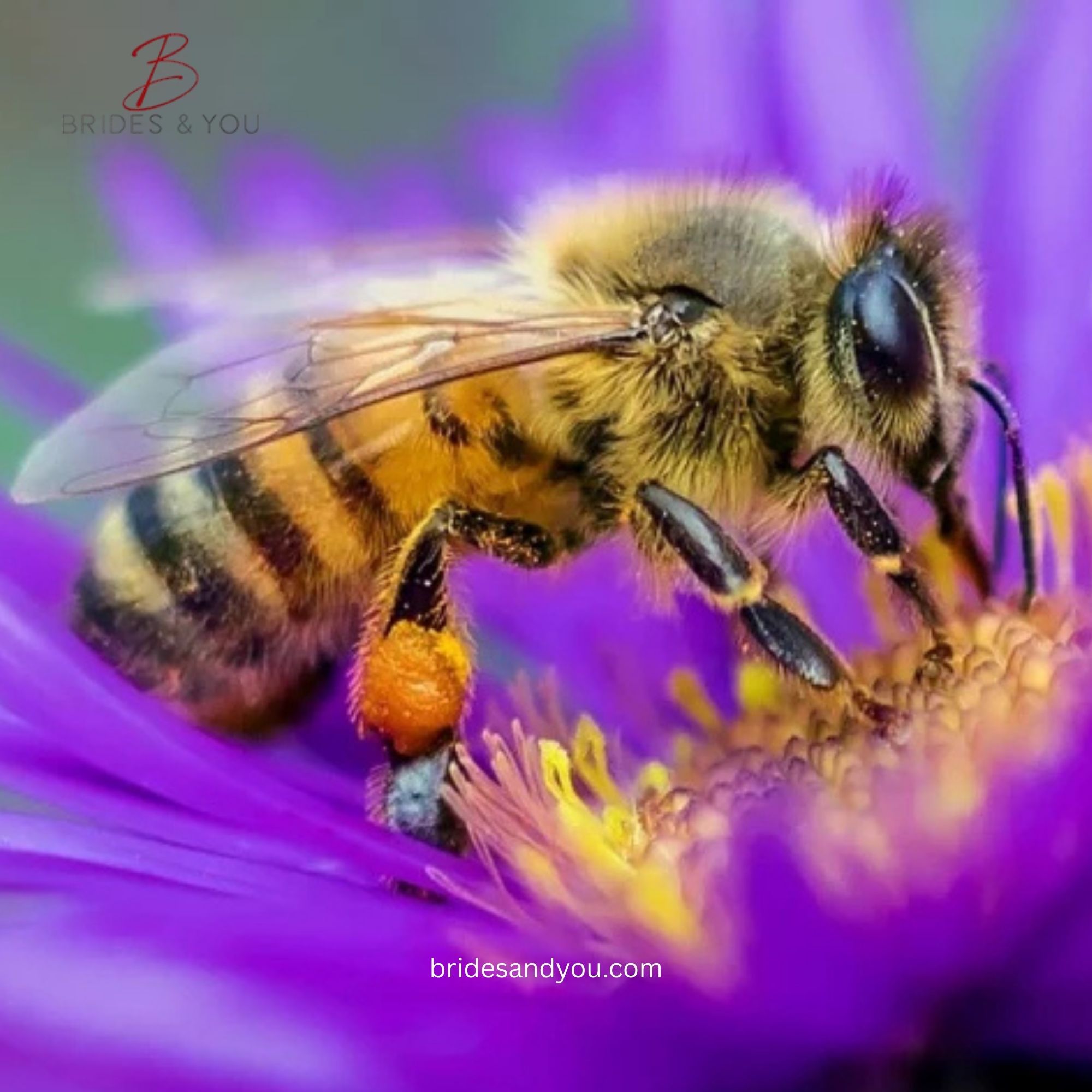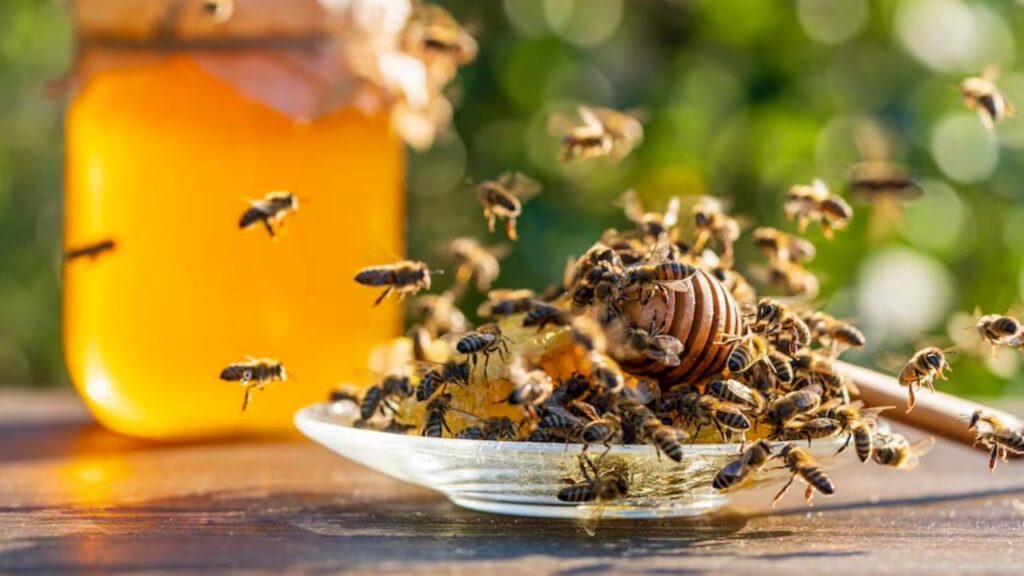Now Reading: Robber Bees Invade Apiary Shop in British Columbia During Nectar Shortage
-
01
Robber Bees Invade Apiary Shop in British Columbia During Nectar Shortage
Robber Bees Invade Apiary Shop in British Columbia During Nectar Shortage

In late August, something unusual and fascinating happened in Terrace, British Columbia. At Rushing River Apiaries, beekeeper Christine McDonald faced an unexpected problem thousands of honeybees stormed into her apiary shop. These bees were not her regular colony members looking for care. Instead, they were engaging in what experts call “robbing” behavior.
The incident quickly drew attention because it showed how fragile the balance of nature can be. Honeybees, which usually live in harmony, turned into desperate raiders due to a nectar shortage. When flowers are not in bloom, bees face food scarcity. In such times, even human-stored honey becomes a tempting target.
This real-life event highlights both the resilience and challenges of honeybees and the difficulties beekeepers face when nature takes an unexpected turn.

What is Robbing Behavior in Honeybees?
Honeybee robbing occurs when bees from one colony attack another colony or target external honey sources. The goal is simple: to steal food.
Normally, bees stay loyal to their hive and gather nectar from flowers. However, when nectar is scarce, survival instincts push them to raid other colonies or in rare cases human storage facilities.
During robbing:
- Bees fight aggressively at hive entrances.
- They tear open wax cells to access honey.
- They can even kill worker bees or queens of weaker colonies.
- The scent of spilled honey attracts more invaders, including wasps, hornets, and yellow jackets.
This behavior is dangerous for both sides. The robbed colony suffers losses, and the robbing bees may spread diseases between hives.
Nectar Shortage: The Root Cause
So, why did robber bees invade an apiary shop in British Columbia?
The answer lies in the seasonal cycle. In late summer, after the spring blossoms fade and before autumn flowers bloom, a “nectar gap” occurs. This gap means there is little food available in nature.
Bees depend on constant nectar flow to produce honey. When this supply runs out, colonies especially larger, stronger ones resort to extreme measures to survive. In Terrace, this nectar shortage led thousands of bees to break into Christine McDonald’s shop, searching for easy access to honey jars and equipment.

How the Beekeeper Responded
Christine McDonald acted quickly to protect her honey and equipment. Her response shows the practical challenges of modern beekeeping:
- Covering Honey Jars: She placed a tarp over the honey jars to prevent bees from accessing them.
- Redirecting Bees: By leaving lights on in the bathroom, she cleverly guided the bees into that space, reducing damage inside the shop.
- Sealing Gaps: After observing the invasion, she identified and sealed a small gap in the door frame that had allowed bees inside.
Her efforts were effective. Over the course of four to five days, the bees gradually stopped returning once they realized food was inaccessible.
Risks of Robber Bee Invasions
Robbing incidents like this may seem unusual, but they are serious threats to beekeeping. Some key risks include:
- Weakened Colonies: Robbing can wipe out weaker colonies entirely.
- Increased Deaths: Worker bees and even queens may die in the fight.
- Disease Spread: Pathogens can easily pass between colonies during close contact.
- Other Predators: The smell of honey attracts wasps, hornets, and yellow jackets, which add more danger.
- Loss of Honey Stocks: For beekeepers, the financial loss of stored honey can be significant.
How Beekeepers Can Prevent Robbing
Experts recommend several preventive measures to reduce the chances of bee invasions:
- Secure Storage: Always store honey in sealed containers and ensure buildings are tightly closed.
- Reduce Hive Entrances: During nectar shortages, narrowing hive entrances makes it easier for guard bees to defend against intruders.
- Work During Evenings: Avoid handling honey during the day when bees are most active.
- Minimize Spillage: Any spilled honey or syrup must be cleaned immediately, as the smell can trigger robbing.
- Equalize Colonies: Beekeepers can balance colony strength to reduce bullying from stronger colonies.
By applying these steps, beekeepers can protect their hives and avoid major losses during nectar gaps.

Why This Incident Matters
The fact that robber bees invaded an apiary shop in British Columbia is not just a local event. It is an important reminder of larger issues:
- Climate and Environment: Changing weather patterns can affect nectar flow, making food shortages more frequent.
- Pollination Crisis: Bees are crucial for agriculture. Protecting them is essential for food security.
- Beekeeping Challenges: Incidents like these highlight the delicate balance between human practices and natural bee behavior.
This story is a clear example of how small changes in the environment can create big challenges for both bees and humans.
Robber Bees Invade Apiary Shop in British Columbia: The Bigger Picture
For the general public, this incident may sound strange or even amusing. But for beekeepers, it is a serious concern. Robbing is a sign of stress in bee populations. It shows how survival instincts kick in when natural resources disappear.
Christine McDonald’s quick thinking saved her honey, but the event also sends a warning. As nectar shortages become more common due to changing ecosystems, robber bee incidents may rise.
Beekeepers across Canada and beyond can learn from this example and take preventive measures before such invasions occur.
Conclusion
The story of how robber bees invaded an apiary shop in British Columbia is more than just a rare event. It is a lesson in nature’s unpredictability and the resilience of both bees and beekeepers.
For Christine McDonald, the invasion lasted several days, but her actions protected her honey supplies. For the rest of us, it is a reminder that honeybees, so vital to our environment and food systems, face constant challenges.
By understanding bee behavior and supporting responsible beekeeping, we can ensure these small yet powerful creatures continue to thrive.










